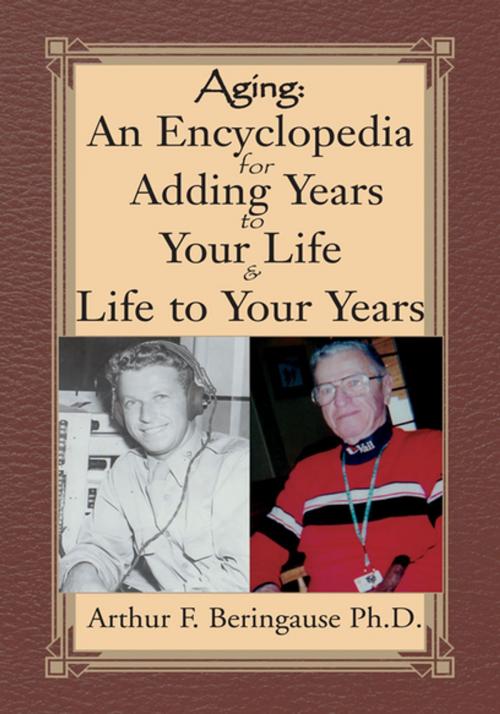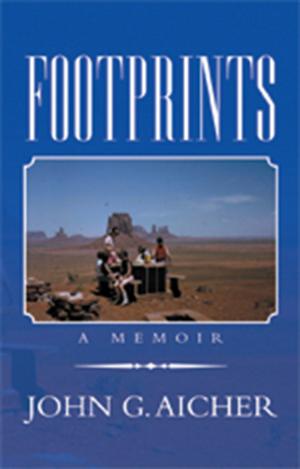Aging: an Encyclopedia for Adding Years to Your Life and Life to Your Years
Nonfiction, Health & Well Being, Medical, Specialties, Geriatrics| Author: | Arthur F. Beringause | ISBN: | 9781462833122 |
| Publisher: | Xlibris US | Publication: | December 15, 2000 |
| Imprint: | Xlibris US | Language: | English |
| Author: | Arthur F. Beringause |
| ISBN: | 9781462833122 |
| Publisher: | Xlibris US |
| Publication: | December 15, 2000 |
| Imprint: | Xlibris US |
| Language: | English |
As the number of old persons increases dramatically, information is the one thing both the young who are trying to take care of the old and the elderly who are trying to take care of themselves need to assuage concerns and solve problems that advancing years bring. Like their young counterparts, the old know shockingly little about care and upkeep, not only of the automobile, but more important of the human body.
Aging: An Encyclopedia concretely and accurately summarizes the latest research in geriatrics and gerontology while presenting strategies for adding years to your life and life to your years. Not just basic questions are answered, such as those involving the onset of cancer, but also seemingly peripheral ones, such as descriptions of government and non-profit agencies that can be reached for information and help. Included are practical aids, such as checklists for choosing a nursing home, a doctor, a financial planner. Theory and application are kept separate. Avoided are false hopes and sensationalism too often found in news coverage of aging. Only solutions to problems of aging which are medically sound and applicable to everyday life are dealt with.
This volume does not pretend to state or to answer every question that at present can be raised concerning aging. There is no attempt at simple solutions to complex problems. The intention is that enough information be included to support and exemplify statements made. Although I am immensely indebted to the many researchers upon whose work I have leaned so heavily, there are few footnotes, acknowledgements and attributions in the text, for the attempt here is to bring out essentials clearly without scholarly encumbrances, such as raised numbers trailed by sets of dots.
A guidebook, this volume is easy to use and small enough to be carried everywhere. The format is designed as a reference to be consulted for particular concerns. Essays are organized in more than 80 topics arranged alphabetically. Entries are self-contained, so that a reader can start anywhere.
Where it is possible to retain accuracy, language familiar to lay people has been substituted for scientific jargon. Technical terms are explained in the glossary at the end of the volume. For more in-depth information, articles and books are cited in the bibliography and in particular areas although it is wise to remember that publishers and organizations are continually revising or bringing out new writings to reflect research with the most recent data and discoveries.
As the number of old persons increases dramatically, information is the one thing both the young who are trying to take care of the old and the elderly who are trying to take care of themselves need to assuage concerns and solve problems that advancing years bring. Like their young counterparts, the old know shockingly little about care and upkeep, not only of the automobile, but more important of the human body.
Aging: An Encyclopedia concretely and accurately summarizes the latest research in geriatrics and gerontology while presenting strategies for adding years to your life and life to your years. Not just basic questions are answered, such as those involving the onset of cancer, but also seemingly peripheral ones, such as descriptions of government and non-profit agencies that can be reached for information and help. Included are practical aids, such as checklists for choosing a nursing home, a doctor, a financial planner. Theory and application are kept separate. Avoided are false hopes and sensationalism too often found in news coverage of aging. Only solutions to problems of aging which are medically sound and applicable to everyday life are dealt with.
This volume does not pretend to state or to answer every question that at present can be raised concerning aging. There is no attempt at simple solutions to complex problems. The intention is that enough information be included to support and exemplify statements made. Although I am immensely indebted to the many researchers upon whose work I have leaned so heavily, there are few footnotes, acknowledgements and attributions in the text, for the attempt here is to bring out essentials clearly without scholarly encumbrances, such as raised numbers trailed by sets of dots.
A guidebook, this volume is easy to use and small enough to be carried everywhere. The format is designed as a reference to be consulted for particular concerns. Essays are organized in more than 80 topics arranged alphabetically. Entries are self-contained, so that a reader can start anywhere.
Where it is possible to retain accuracy, language familiar to lay people has been substituted for scientific jargon. Technical terms are explained in the glossary at the end of the volume. For more in-depth information, articles and books are cited in the bibliography and in particular areas although it is wise to remember that publishers and organizations are continually revising or bringing out new writings to reflect research with the most recent data and discoveries.















